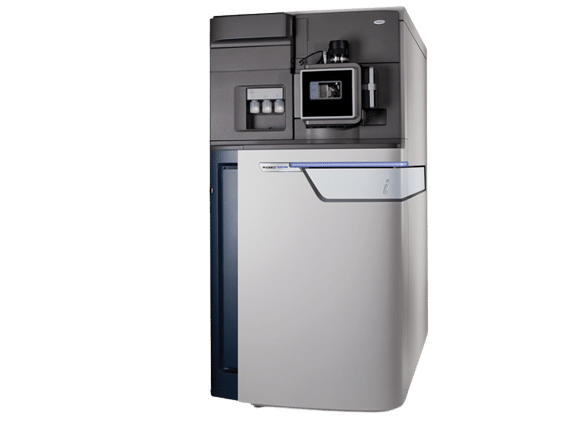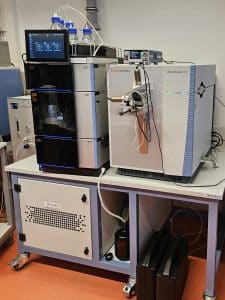This system is unfortunately already sold. If you are looking for a similar system, contact us so that we can see whether we can source one for you!
The Waters SYNAPT G2-S incorporates both high-sensitivity Waters StepWave™ ion transfer optics and Triwave® ion mobility technologies along with a suite of new informatics tools to take qualitative and quantitative high resolution performance to a new level.
The SYNAPT G2-S provides a 30X improvement in signal intensity for mass spectral peaks, better than a 5X improvement in signal-to-noise, and up to a 10-fold improvement in limits of quantitation over previous-generation mass spectrometers. The significant increase in sensitivity, together with the unrivalled selectivity and analytical peak capacity made possible by ion mobility separations, allows the Waters SYNAPT G2-S to identify and quantify sample analytes at lower concentrations than any other high resolution mass spectrometer and easily and routinely reveal details about complex samples that were previously difficult or impossible to obtain.
StepWave ion-transfer optics technology employs a revolutionary off-axis design for dramatically increasing the efficiency of ion transfer from the ion source to the MS analyzer, while at the same time actively eliminating undesirable neutral contaminants. The resulting sensitivity improvement is critical, for example, in metabolite identification where the goal is to find, identify and quantify all metabolites in a sample.
The instrument is equipped with a 4k quadrupole and currently installed and running in our lab in Almere.
| Specifications | |
| TOF Mass Resolution | >20.000 FWHM @ m/z 956 in resolution mode, >40.000 FWHM in high resolution mode |
| Mass range | 20 – 100.000 m/z in resolution mode, 20 – 32.000 m/z in high resolution mode |
| Quadrupole mass range | 20 – 4.000 m/z |
| Quadrupole transmission in non-resolving mode | 20 – 16.000 m/z for 4k quadrupole |
| Mass accuracy | better than 1 ppm RMS with internal lockmass calibration |
| Acquisition rate | Up to 30 Hz |
| Dynamic range | at least 4 orders of magnitude |
| Measurement modes | DDA, DIA (MS(E), IMS-TOF |
| MS to MS/MS switching time | 5 ms |
| IMS functions | Separation of ions based on their mobility Time Aligned Parallel (TAP) fragmentation Drift time measurements |




